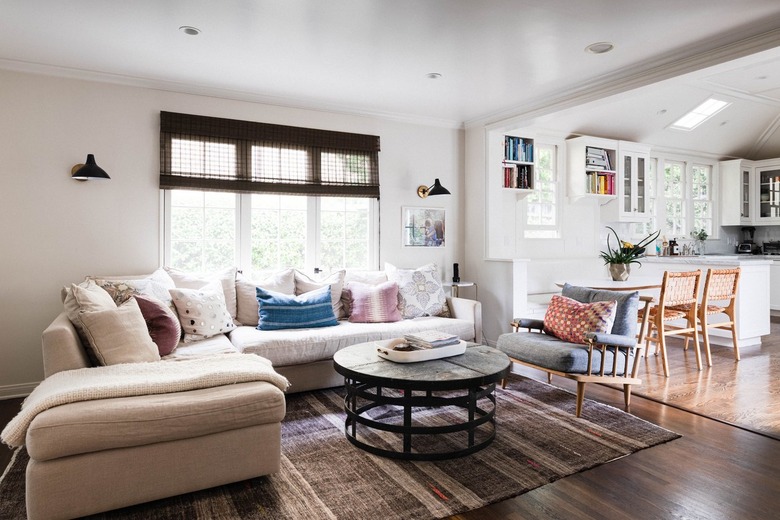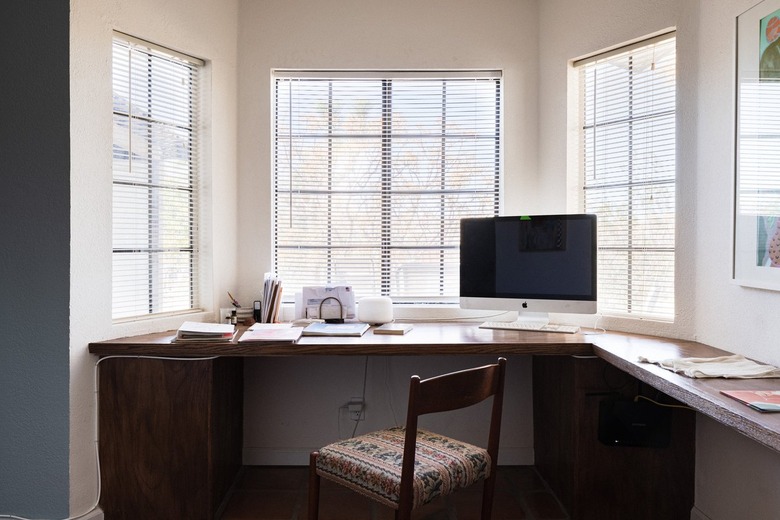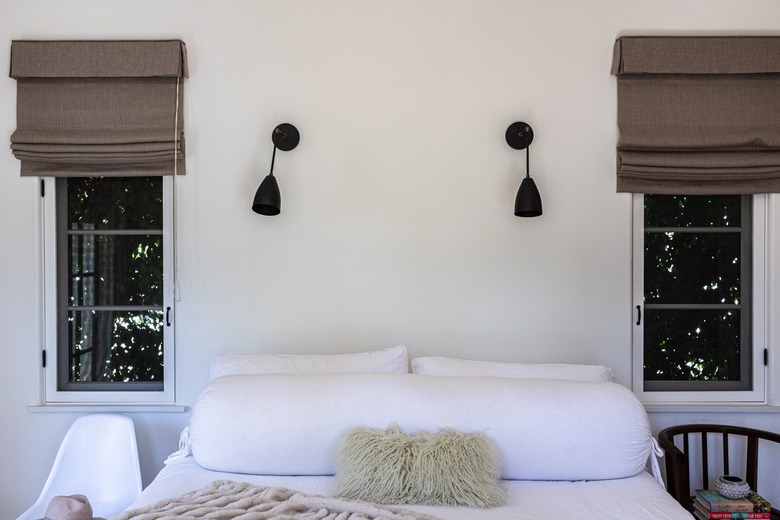Inside-Mount Vs. Outside-Mount Shades And Blinds: How To Choose
Before you can even start thinking about the aesthetics of your window shades or blinds or measuring for the exact product you want, you first have to decide: inside mount or outside mount? Both mount types have their pros and cons, but often the decision comes down to privacy, light control, and aesthetics.
Not sure which to choose? Here's a guide to all of the pros and cons.
Inside and Outside Mount Defined
Inside and Outside Mount Defined
Inside-mounted blinds and shades simply fit inside the window frame and are mounted at the top, with the window treatment brackets screwed into the top or top sides of the window jamb frame. It's the most commonly chosen approach for mounting.
Outside-mounted window coverings attach outside the window frame on the wall above the casing or on the trim itself, resulting in your window blinds or shades extending beyond the top, bottom, and sides of the casing and partially or completely covering your window's trim. This approach offers an alternative when a shallow window makes an inside mount difficult or impossible.
Frame Measurement Is Crucial
Frame Measurement Is Crucial
Once you choose the type of mount that's suitable, you'll have to measure for the actual blinds or shades that you'll order, but you'll also have to measure in order to know what type of mount will work. Even if you're dead set on an inside mount, you may have to abandon your plan after measuring or even simply eyeballing your window frame and casing. Whereas blinds and shades mounted outside the frame rarely obstruct anything, mounting them inside can be a problem if your interior frame is too shallow or involves handles, window cranks, alarm sensors, or any other obstructing elements.
You'll have to measure for the interior unobstructed depth of the frame by determining how much distance there is from the front edge of the window trim back to the point at which the obstructions begin. Check your measurement against the specifications of the product you're considering to see whether your interior frame can accommodate installation of the brackets. You may still be able to install blinds or shades inside the casing if you meet only the minimum depth requirement, but the blind or shade headrail may protrude a bit beyond the front of the window frame.
Because ordering and installing window treatments requires exact measurements for a proper fit, a pleasing look, and smooth operation, you may want to have a window treatment professional help you avoid project failure by doing the measuring for you.
Reasons to Choose Inside Mount
Reasons to Choose Inside Mount
Among the reasons that make doing an inside mount appealing, the most compelling is appearance. Shades and blinds mounted inside a window frame create a clean and very finished look. If you're lucky enough to have beautiful trim work around your windows, make the most of it. The world of window treatments explodes with choices: beautiful colors, textures, and wood tones for blinds along with eye-catching fabric patterns and colors for shades. Doing an inside mount allows you to pair trim and treatment for spectacular, statement-making effect.
Some reasons for choosing an inside mount are practical. If you have a deep sill, inside-mounted treatments are out of the way so the sill can serve as a shelf. Inside mounts also allow you to keep wall space around the window for such things as wall decor. As part of a layered treatment, shades and blinds contained within the casing won't catch on the drapery treatment. Finally, shades and blinds that can be installed close to the window with minimal space on the sides can offer the best insulating value against cold windows.
Possible Problems With Inside Mount
Possible Problems With Inside Mount
There are only a couple of issues created by inside-mount blinds and shades that are properly fitted and hung correctly. First, when raised all the way to the top, the stacked treatment can still diminish your full view. Second, even when correctly measured for minimal gap at the edges, light can make its way through even the small space on each side.
Reasons to Choose Outside Mount
Reasons to Choose Outside Mount
While the inside-mount approach creates a good look, the outside approach is all about flexibility and problem avoidance. A window that's too shallow will most likely force you to use an outside mount, but in addition, an outside mount means you won't need to worry about avoiding cranks, handles, or other obstacles on the inside of the window frame. When your window treatment is in the raised position, you'll have your window's full view, and when it is fully closed, the window will be completely covered, blocking all the light, especially if you're using blackout shades and blinds.
If your trim work is in bad shape, outside mounting can help you hide it. Shades and blinds mounted outside the window frame can also serve to hide windows with odd shapes and can create the impression that all windows in a room are uniformly sized when in fact they aren't. Mounting treatments higher than the top of the window can even create the illusion of greater window height.
Possible Problems With Outside Mount
Possible Problems With Outside Mount
On the other side of the coin, blinds and shades mounted outside the window frame will hide beautiful trim and moldings. The need for them to be wider than your frame also decreases otherwise usable space between windows and can make the windows seem too large in a small room. Because they hang away from the window glass and aren't snugged up into the frame, outside-mount blinds or shades can be less effective at insulating against cold windows. Finally, blinds and shades mounted outside the window frame in high-traffic areas can get bumped and knocked around and can suffer damage.
References
- Blinds.com: Blinds vs. Shades – How to Make the Right Choice for Your Home
- Blinds.com: What is the Difference Between Inside and Outside Mount Blinds?
- HunterDouglas: Choosing Inside or Outside Mount Window Treatments
- FactoryDirectBlinds.com: Blackout vs. Room Darkening Shades: The Ultimate Guide To Choosing the Right Option for You


